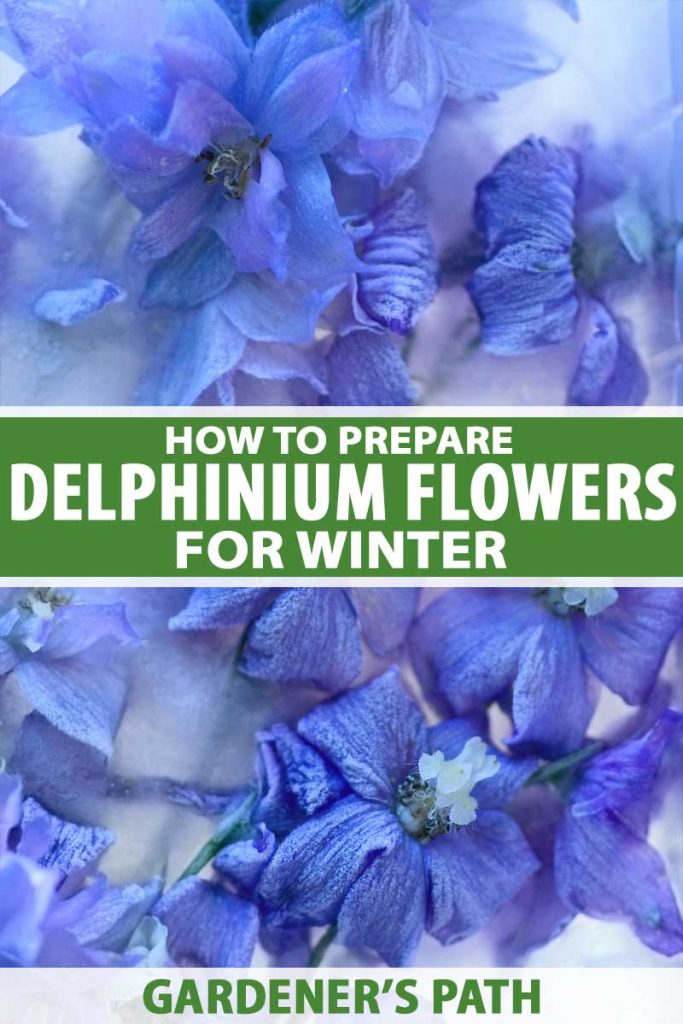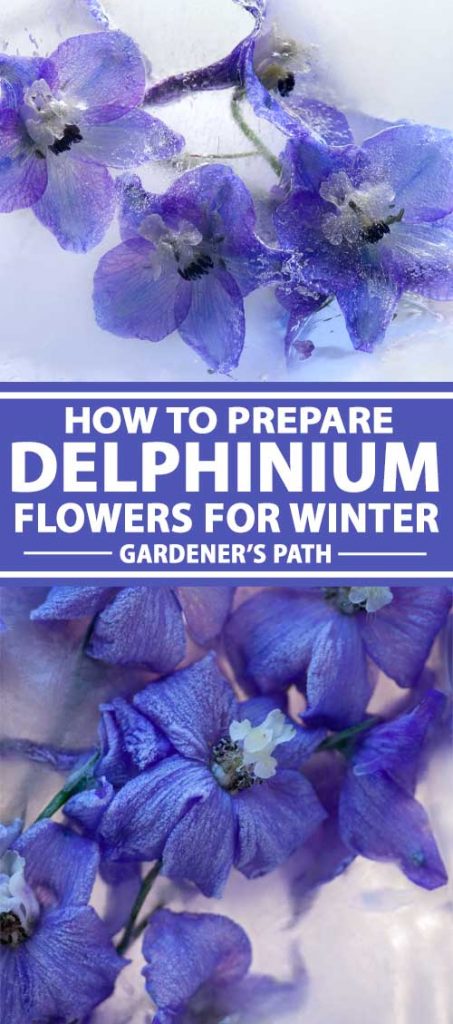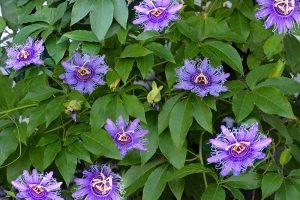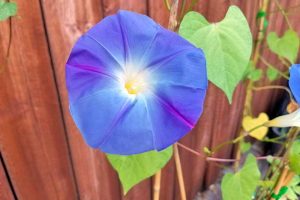It’s kind of a miracle that my first-ever delphiniums survived their maiden winter in Alaska.
I had purchased them at the Home Depot, planted them, and then sat back and happily watched the spikes bloom in gorgeous shades of purple and blue against my red house.
When September came, dragging increasingly chilly nights along with it, the delphiniums died back.
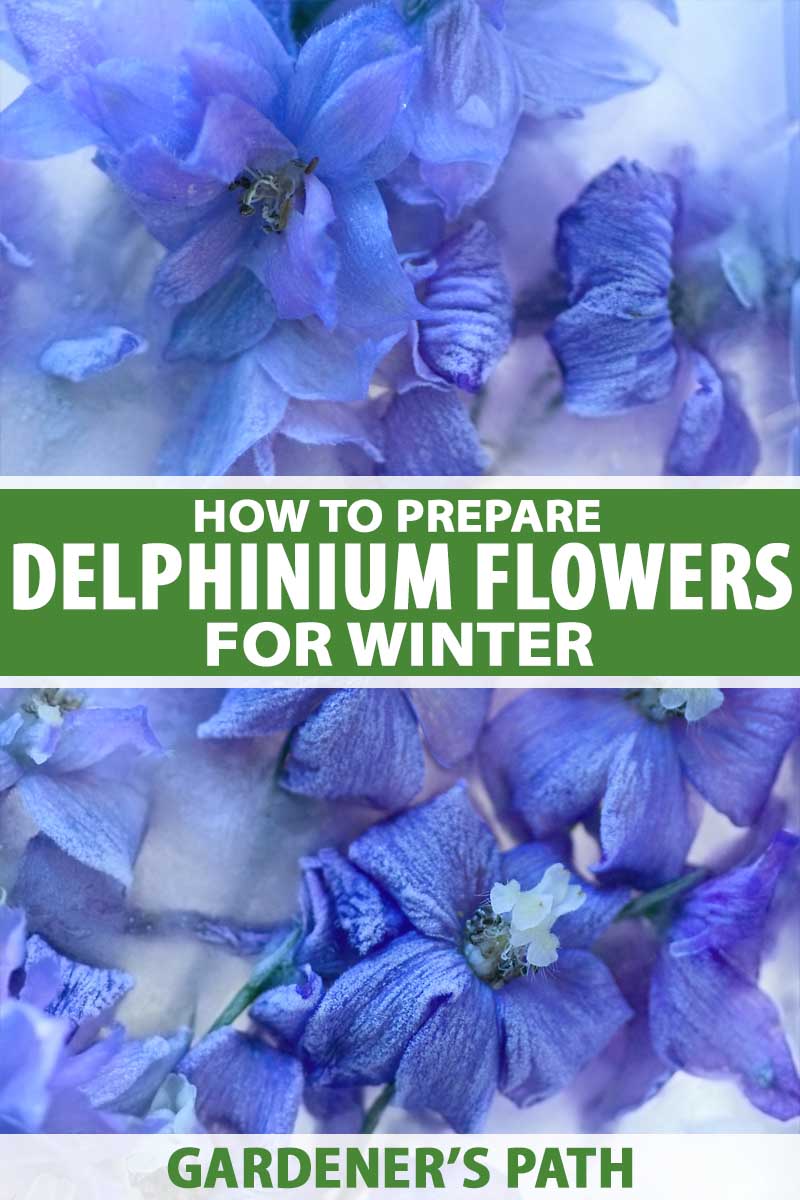
We link to vendors to help you find relevant products. If you buy from one of our links, we may earn a commission.
And then… I just left them there. Tall, scraggly, and brown, without any mulch to speak of.
Unless you count snow.
Yet they came back the following spring. I had to cut the dead stalks down to allow the new green growth to grow uninhibited.
The next winter, I made sure to cut the stalks down before the snow fell. I also made a few more preparations to make sure my beautiful plants could easily grow new shoots the following spring.
If you’re wondering how to get your delphiniums ready for winter, this guide will show you everything you need to know.
Here’s what I’ll cover:
What You’ll Learn
Delphiniums vs. Larkspur
Before you prepare your plants for winter, it’s a good idea to make sure you know what’s in your garden.
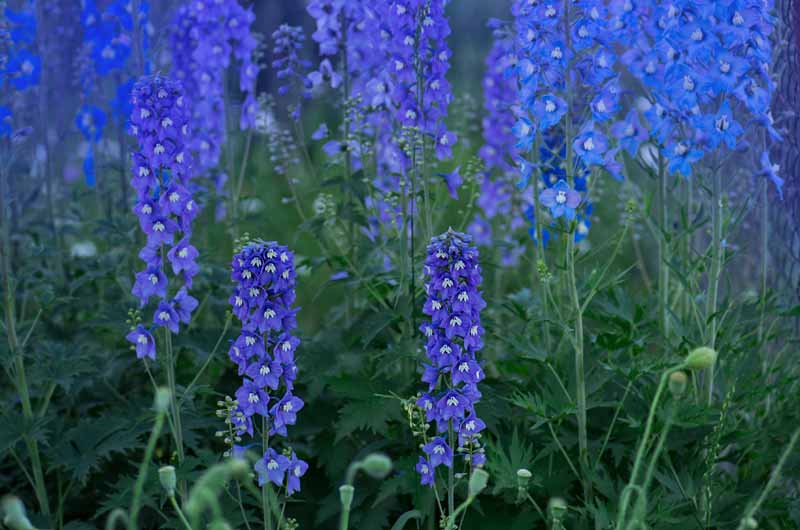
Delphiniums are often confused with their close relatives, larkspur. And for good reason: the two look nearly identical.
But true larkspur is an annual that’s not going to survive over the winter no matter what you do, whereas delphiniums are short-lived perennials that can be overwintered.
Larkspur does reseed easily, however, so don’t lose hope if you are growing larkspur!
Some of the most common perennial delphinium species include Delphinium elatum, D. grandiflorum, and D. chelianthum.
In addition to the difference between annual and perennial status, larkspur (Consolida spp.) tends to be a more delicate flower with more spaced-apart blooms.
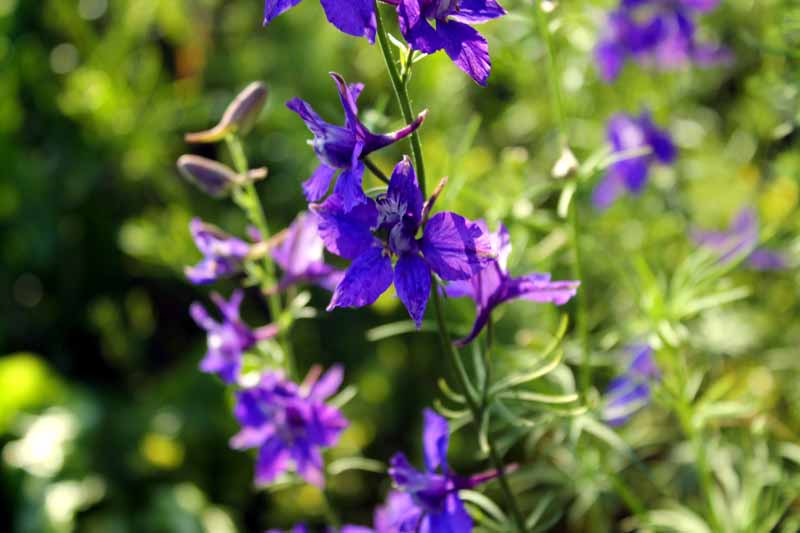
Delphinium blooms, on the other hand, are often more densely clustered.
Yet even perennial delphiniums are sometimes referred to with the common name “larkspur,” so I don’t blame you if you’re confused.
When and How to Cut Spent Stalks
To keep your garden looking tidy during the growing season, feel free to deadhead. Cut flower stalks down to where the leaves begin once all the blooms have faded.
This will encourage the growth of side shoots, possibly providing you with a second round of color before fall hits.
Make sure you don’t cut the leaf stalk off until all of the leaves have turned yellow and begun to brown.
When those leaves are good and dead, you can cut the stalks all the way down to about an inch or two above soil level.
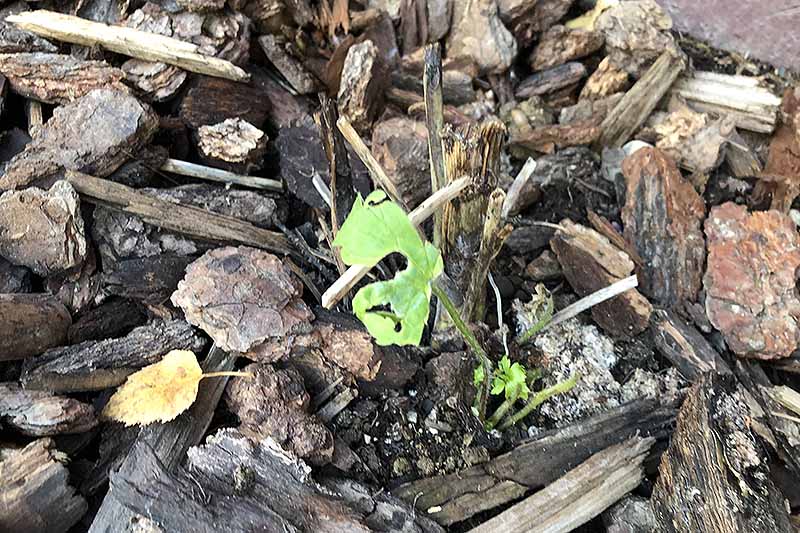
As demonstrated in the photo above, you might still see small side shoots grow right up until first frost, and that’s fine. They’ll die back soon enough.
When springtime comes, new shoots will grow up past the old stalk, bringing a riot of color to your flower beds.
Clear Debris
Winter cleaning is just as important as spring cleaning – especially when it comes to gardening.
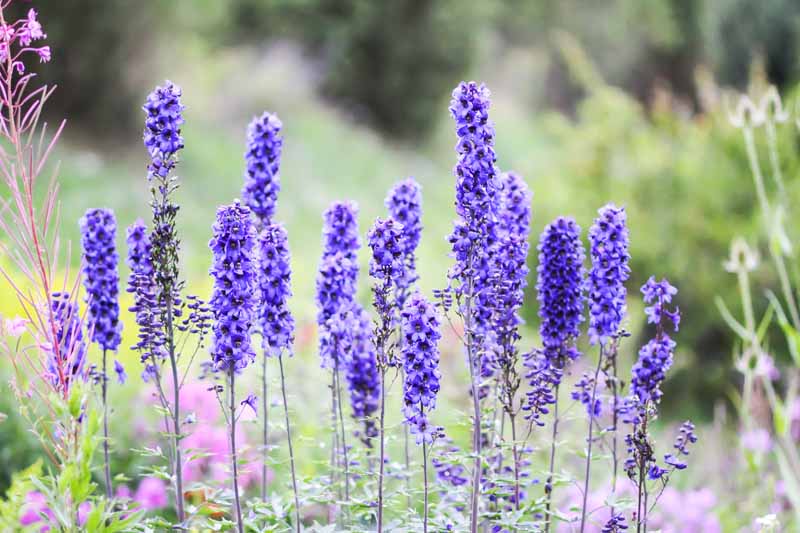
In the area around where your delphiniums are growing, clear away any debris left by your dazzling columns of blue and purple beauties.
Pluck any remaining weeds out as well.
Cleaning my flower garden before I tuck my delphiniums in for their winter dormancy is extra important this year because my garden suffered a massive aphid infestation.
Whenever I trimmed off aphid-infested stalks this summer, I took them to the fire pit to be burned.
Many species of aphid eggs are, unfortunately, quite cold hardy. You can’t count on even a bitterly cold Zone 3 winter to kill them and prevent them from returning the following spring.
By cleaning your garden, you make it harder for aphids, along with other pests and diseases, to come back in full force when the weather warms up again.
Water Your Plants
Just because the plant stops blooming and starts dying back doesn’t mean you should stop watering it. The roots, after all, are very much alive and will need moisture right up until the ground freezes.
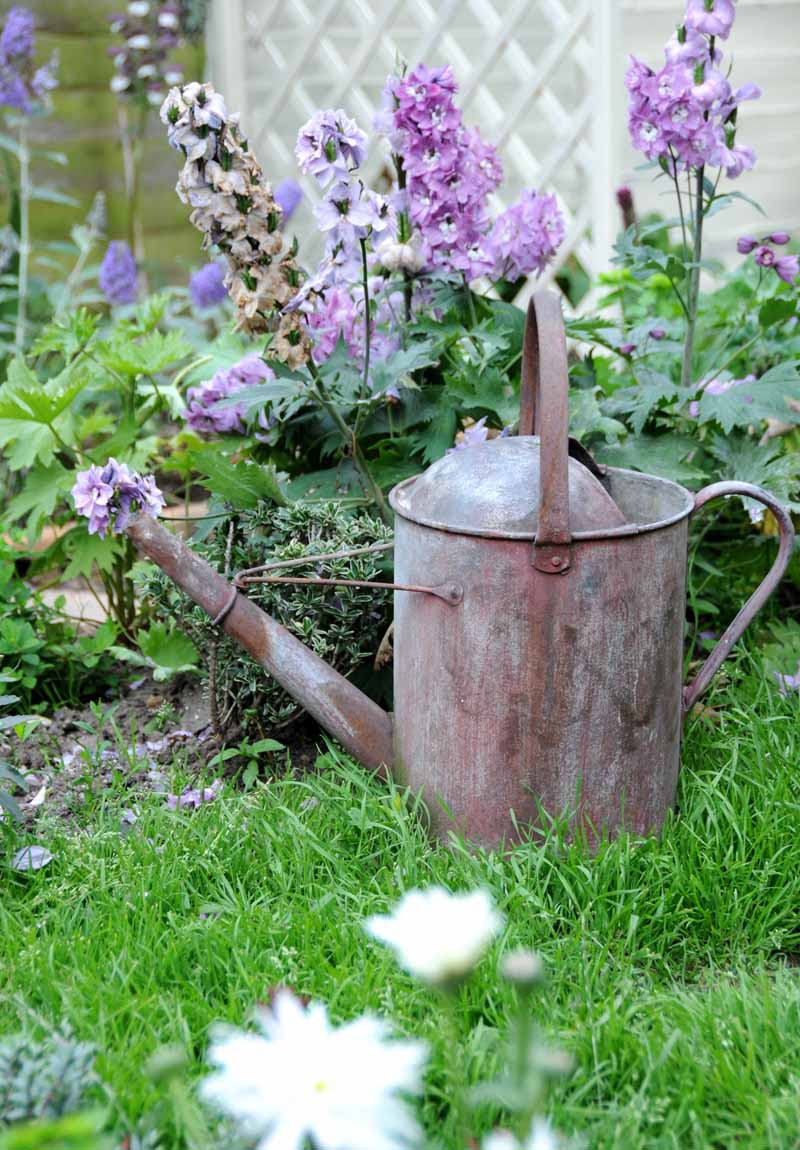
If it rains about once or twice a week, don’t worry about adding water. But do give your plants about an inch of water every week if you’re stuck in a dry spell.
Stop watering them once air temperatures begin to drop into the low 40s and below.
During warm periods between freezing spells, if you don’t have melting snow or rain, go ahead and give the plants some water.
Keeping the plants hydrated in the fall and during any periods to follow when air temperatures are above freezing will help ensure the glorious return of their beauty come springtime.
Add Mulch for Winter Warmth
The next thing you’ll want to do is mulch the stalk and root area, to help the plant stay warm and hydrated during the winter.
While delphiniums are cold hardy to USDA Zone 3, where temperatures can get down to -30°F, they need a bit of help to ensure that they survive a cold and frosty winter.
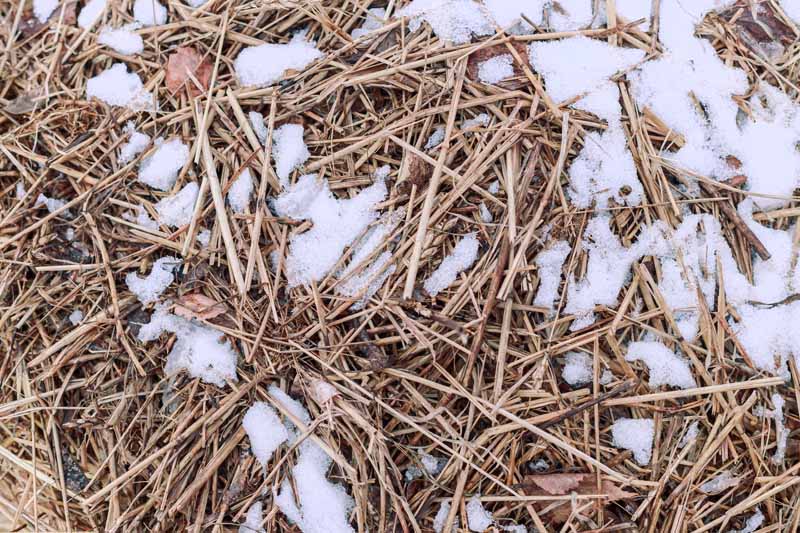
In mid- to late fall, grab some organic mulch from your local gardening store. I like to buy straw bales from my local animal supply store, and this is another excellent option.
Sometimes I even use a mix of straw and hay, and until recently, I admit I didn’t exactly understand the difference between the two.
Here’s a quick breakdown:
- Straw is the dried-out stem of grain crops. It’s what’s left after the grains that grew on it have been harvested. It’s literally just hollow stalks.
- Hay is unharvested, dried-out grains and grass, meaning there are lots more seeds in hay that could find their way into your garden soil and grow as weeds if they are viable.
You can also use wood chips, chopped-up leaves, and even evergreen boughs like those left over after you take down your Christmas tree – make sure you remove these in spring as they can alter the pH of the soil as they break down.
Mulch provides protection from severe cold, especially if a layer of snow falls on top of it. Mulch also helps to keep the soil from shifting and heaving under changing temperatures and unpredictable spells of rain and snow.
You can learn more about winter mulching in this guide.
Safely Tucked in for Winter
With your delphiniums cozied up for cold times, you’ll be able to relax and enjoy a restful hibernation period, too.
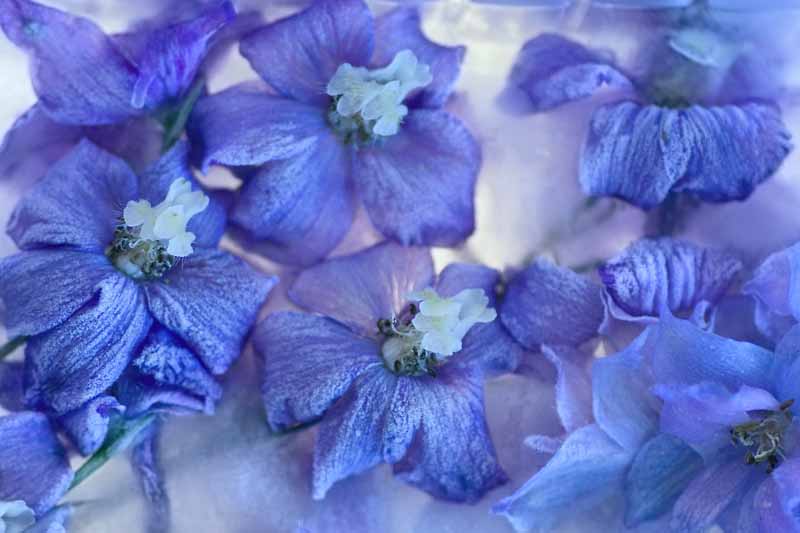
When springtime rolls around again, you and your delphiniums can hop into action again and get ready for a splendid spring and summer.
Have you ever overwintered these lovely flowers? If you have any extra tips or questions, drop me a line in the comments below.
And check out these articles on growing delphiniums in your garden next:
Photo Laura Melchor © Ask the Experts, LLC. ALL RIGHTS RESERVED. See our TOS for more details. Uncredited photos: Shutterstock.
